Table of contents
Introduction
Professor Jack Dongarra is a recipient of many prestigious awards, including the ACM A.M. Turing Award in 2021. His pioneering contributions to numerical linear algebra, scientific computing, and high-performance software have profound, broad, and lasting impacts on scientific studies in both conventional and emerging fields. This presentation describes Jack’s impact from different perspectives. In addition to valuable mathematical software packages and platforms he brought into existence as the building blocks of modern computing and data analysis, Jack has an extraordinarily large number of coauthors, let alone a much larger number of followers. Via his direct and broad research collaborations, Jack has kept identifying emerging challenges and making paradigm shifts. Furthermore, he has fostered a large, global high-performance computing community across various fields, generations, and cultures.
Technical Description
The impact analysis is based on a document collection, with
about 59,000 published articles
that directly cite Jack’s work. The collected articles are
retrieved from the Semantic Scholar database as
updated by April 2023. The collection is incomplete, compared to
the estimated total citation number 110,000 by Google as of May 2023, due to
limited data sources and access. Three networks are generated from
the document collection: (1) a collaborator network, (2) a
thematic content network, and (3) a geographical affiliation
network. The collaboration network has about 1,660 coauthors with Jack. It is
depicted in a constellation structure of 10 clusters by the
similarity of publication patterns. The thematic content network
is embedded in a 2D spatial space. The articles are clustered by
title-abstract content into 23
broad themes. The annotation terms over each theme cluster appear
most frequently in the titles and abstracts. For community
detection on a network, we use the algorithm BlueRed
[1, 2, 3, 4,
and 5]. For
the spatial embedding of a network with cluster configuration, we
use a cluster-enhanced version of the algorithm SG-t-SNE. The
maps at the bottom give the geographical locations of about 437 coauthor affiliations. They manifest
the global impact of Jack’s contributions and collaboration. The
spatial locations are determined by the combined use of
Crossref and Google Maps. The data and
processing codes are available upon request.
Maps & self-navigated surf-search
We present a few networks and maps generated from the retrieved data. On the thematic content map, every article is represented by a unique dot point. Clicking on the map will activate self-navigated surf-search in the following three modes.
The surf mode (the default mode). One surfs on the map simply by moving the cursor around. When the cursor is on top of an article dot, the article title pops up. Move the cursor around to browse related articles nearby. A click on the dot leads one to the article source (by direct link).
The DOI search mode. Enter a DOI (digital object identification) code in the search window, the article will be located and highlighted on the map. One can then surf around.
The keyword search mode. Enter a keyword in the search window, articles with the key word in the titles or abstracts are highlighted.
Enjoy the surf-and-search!
Thematic Content Network

Author Collaboration Network
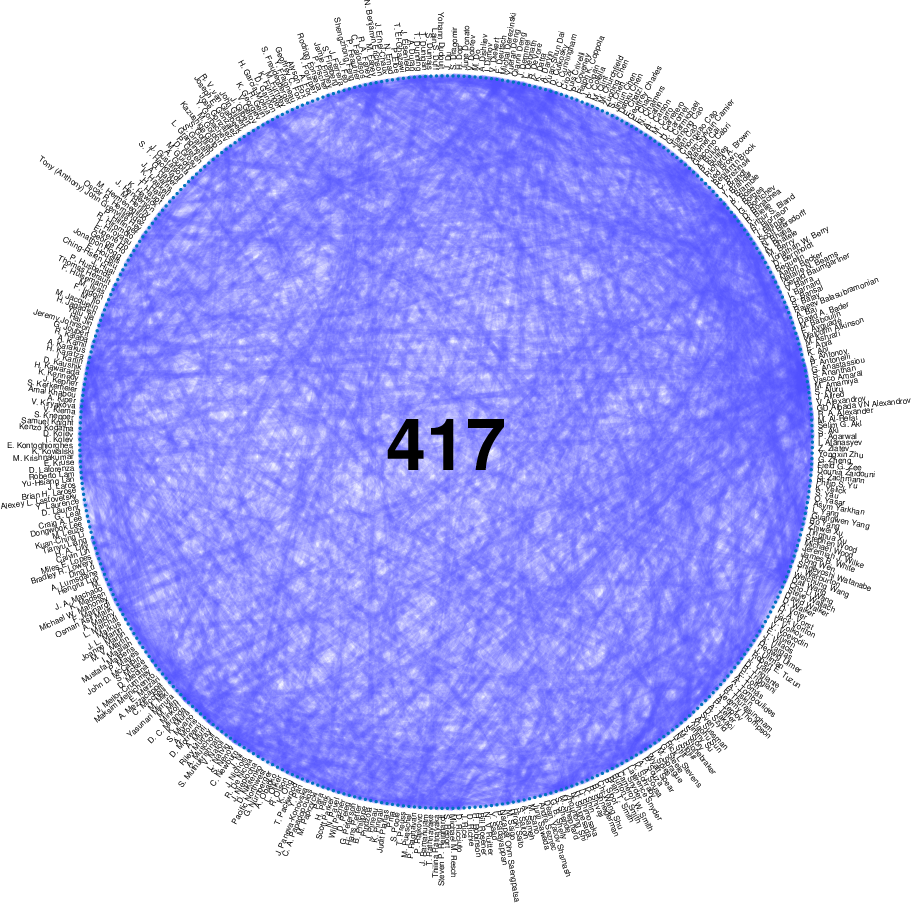
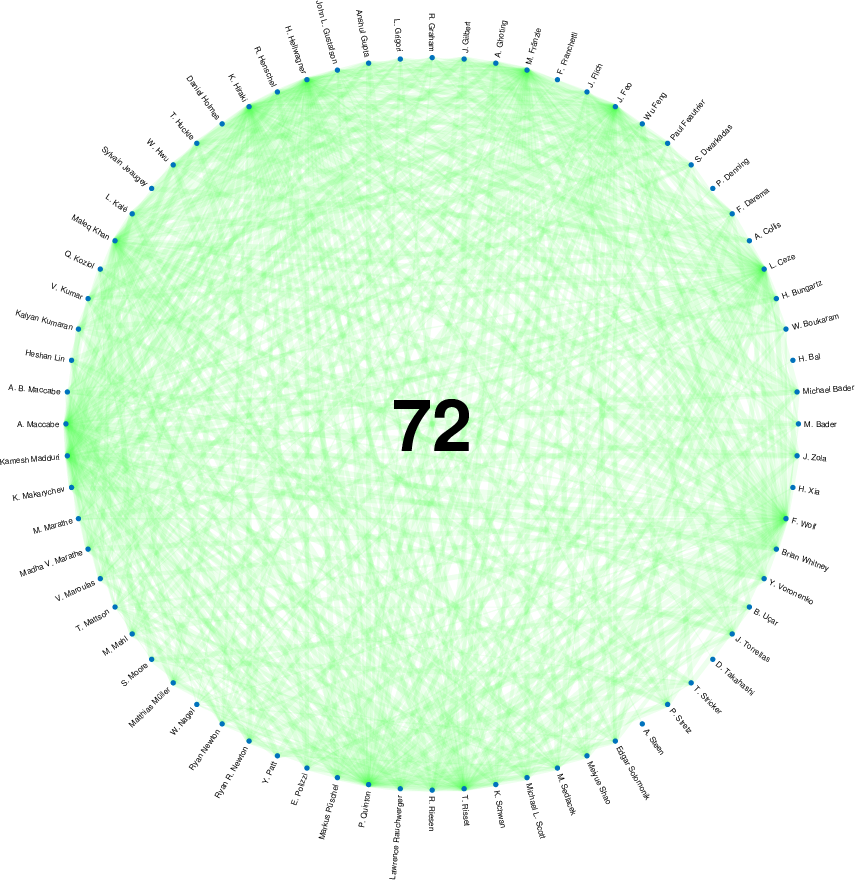
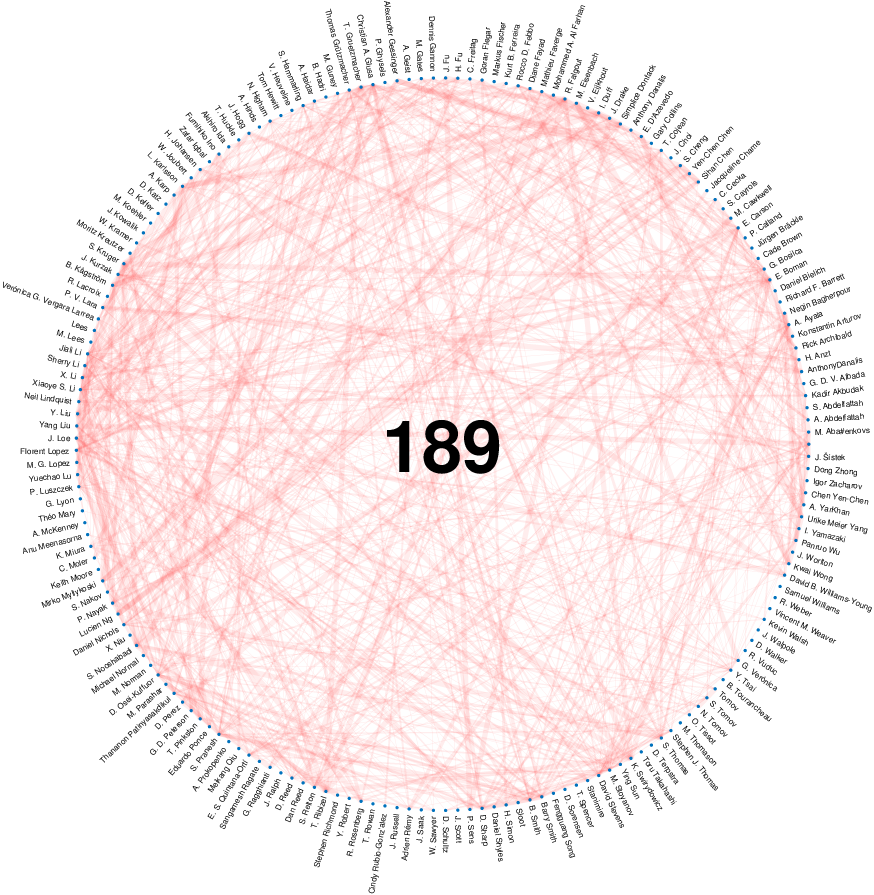
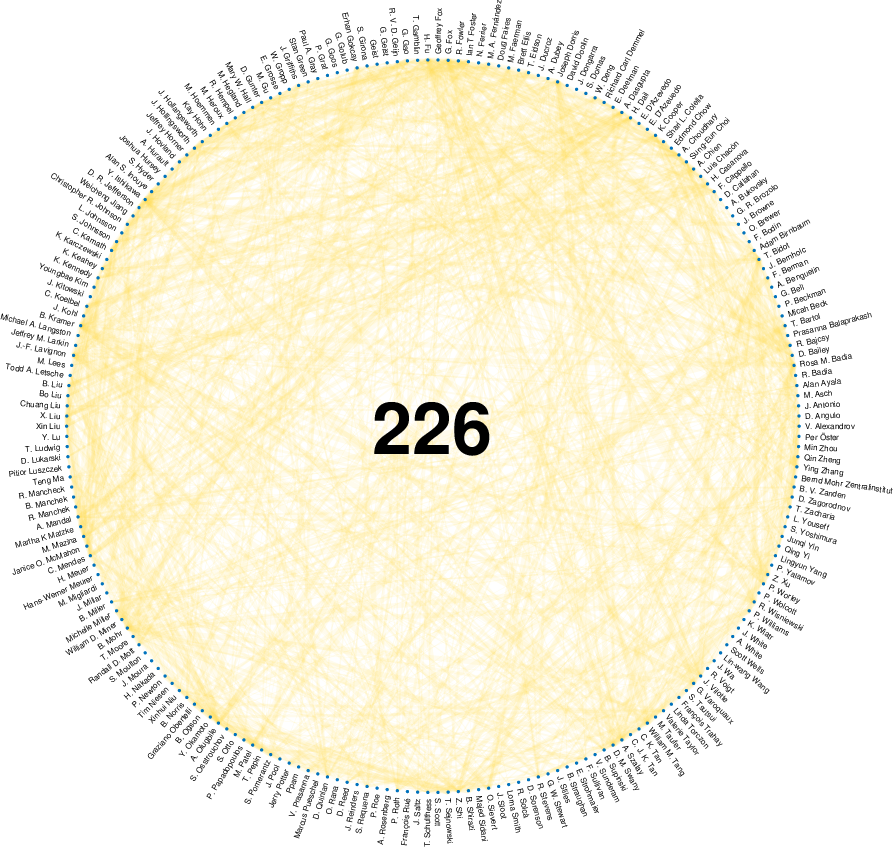


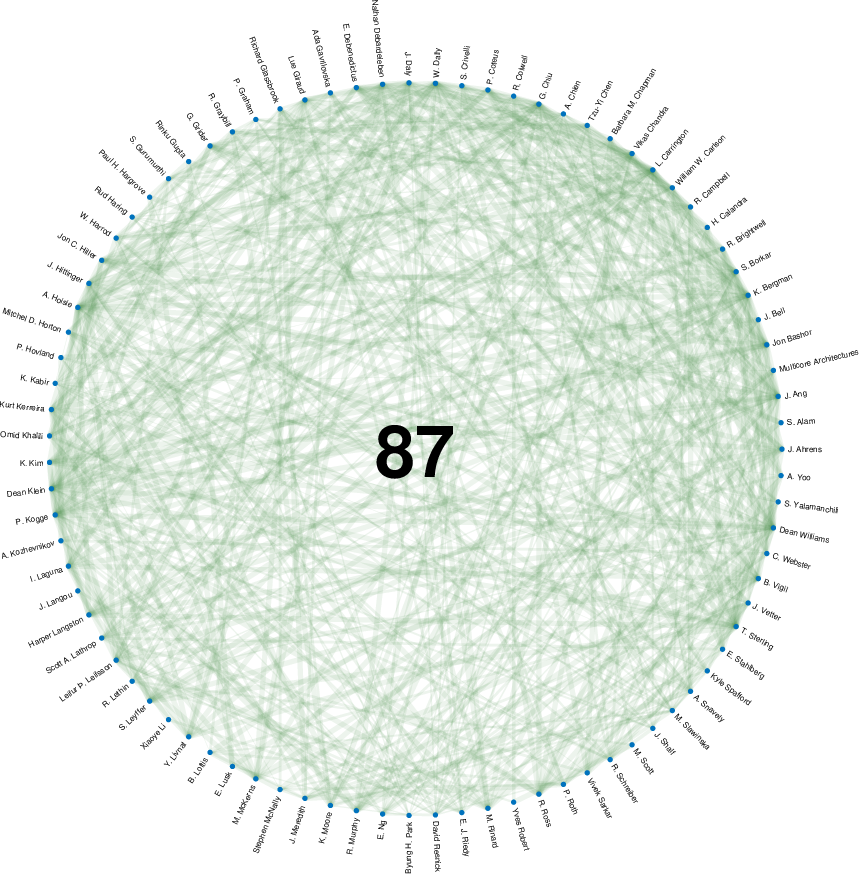
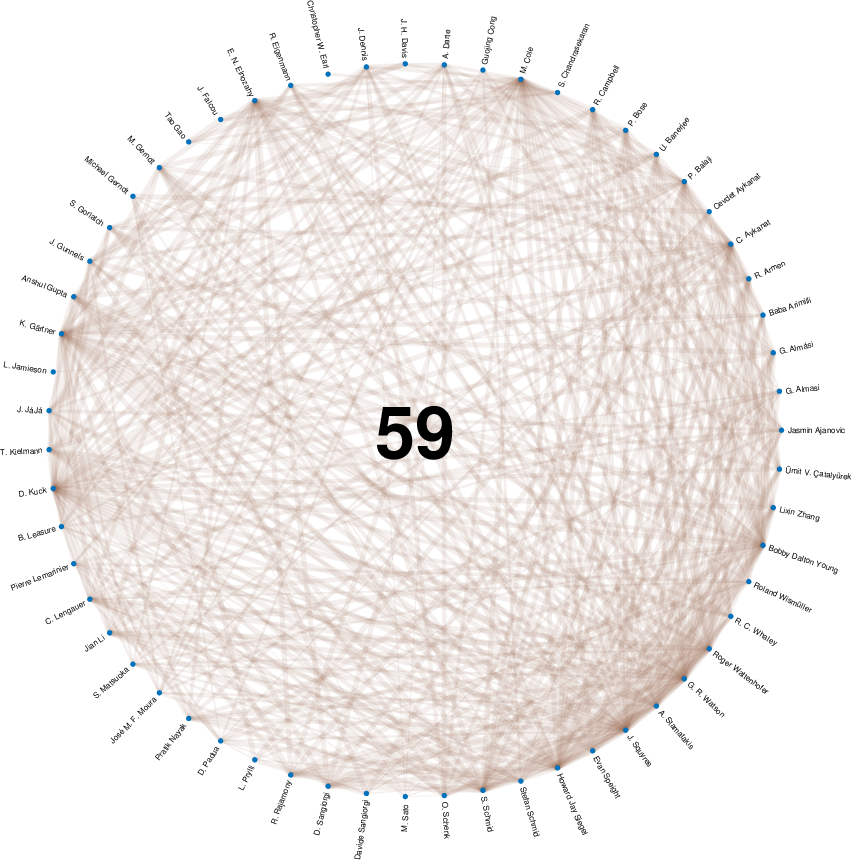
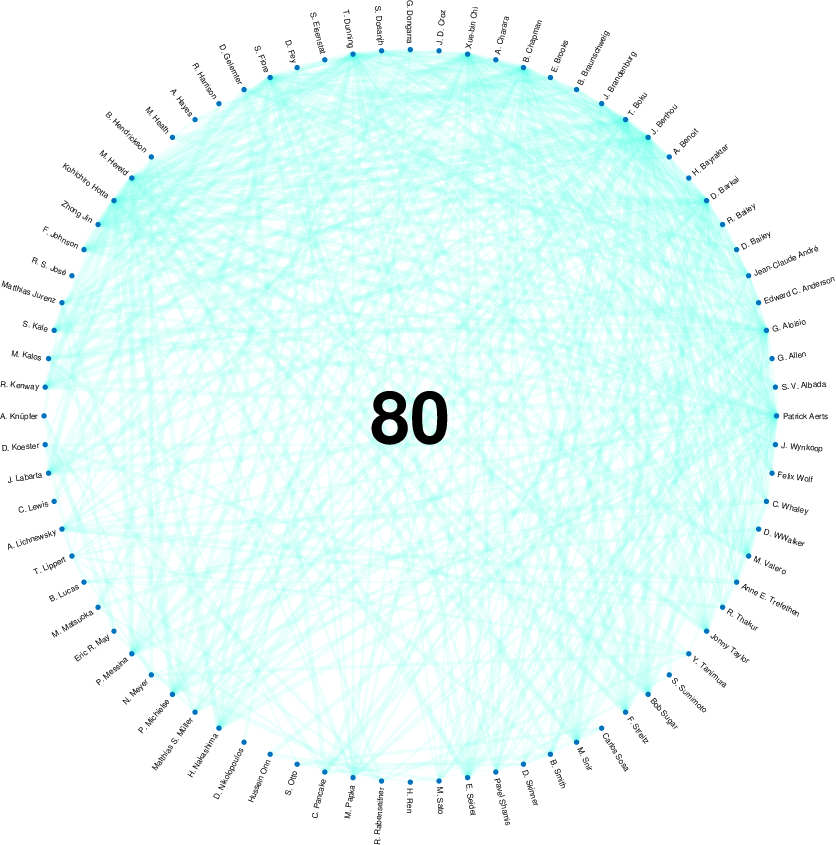


Google Scholar as of May
2023).
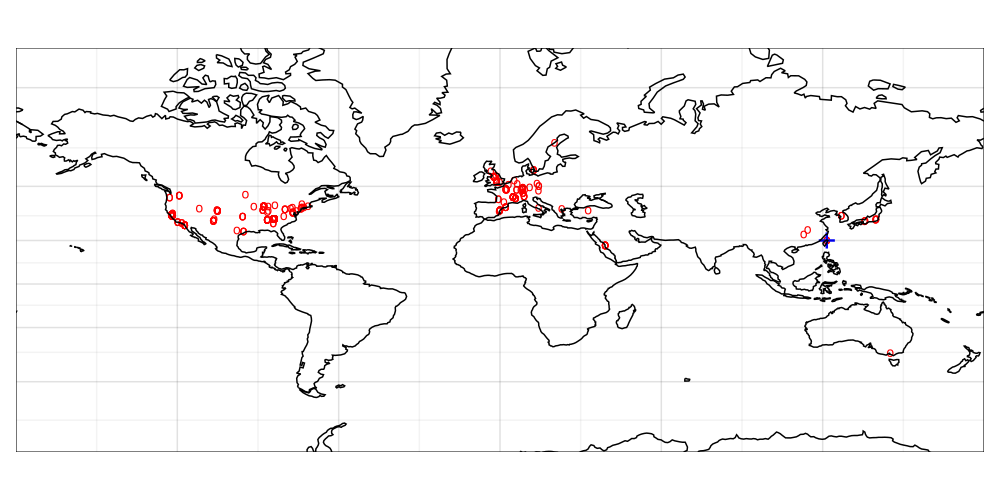
Author Information
- Dimitris Floros,
fcdimitr@cs.duke.edu - Nikos Pitsianis,
nikos@cs.duke.edu - Xiaobai Sun,
xiaobai@cs.duke.edu
at Duke University, NC, 27708, USA.
Sources & tools
- Semantic Scholar API
- Google Maps Geocoding
- Crossref
- SG-t-SNE-Pi
- Plotly and Bokeh for interactive visualizations
- JQuery QueryBuilder for composing queries
Change log
- Webpage went online May 10, 2023